Discover how a bimodal integration strategy can address the major data management challenges facing your organization today.
Get the Report →Feed JSON Services into FineReport
How to set JSON services as a JDBC data source in FineReport.
The CData JDBC Driver for JSON fully implements the JDBC standard and can provide JSON services connectivity to a wide variety of BI, reporting, and ETL tools and custom applications. In this article, we explain how to set JSON services as JDBC data source in FineReport and view JSON services as a table in the Report Designer.
Set Up a JDBC Data Source of JSON Services
Follow the instruction below to set JSON services as a FineReport database connection.
- Copy the cdata.jdbc.json.jar file from the lib folder in the CData JDBC Driver for JSON installation directory to the lib folder of the FineReport installation directory. You will need to copy the cdata.jdbc.json.lic file as well.
- From the Server tab, select Define Data Connection, click to add a new connection, and click JDBC.
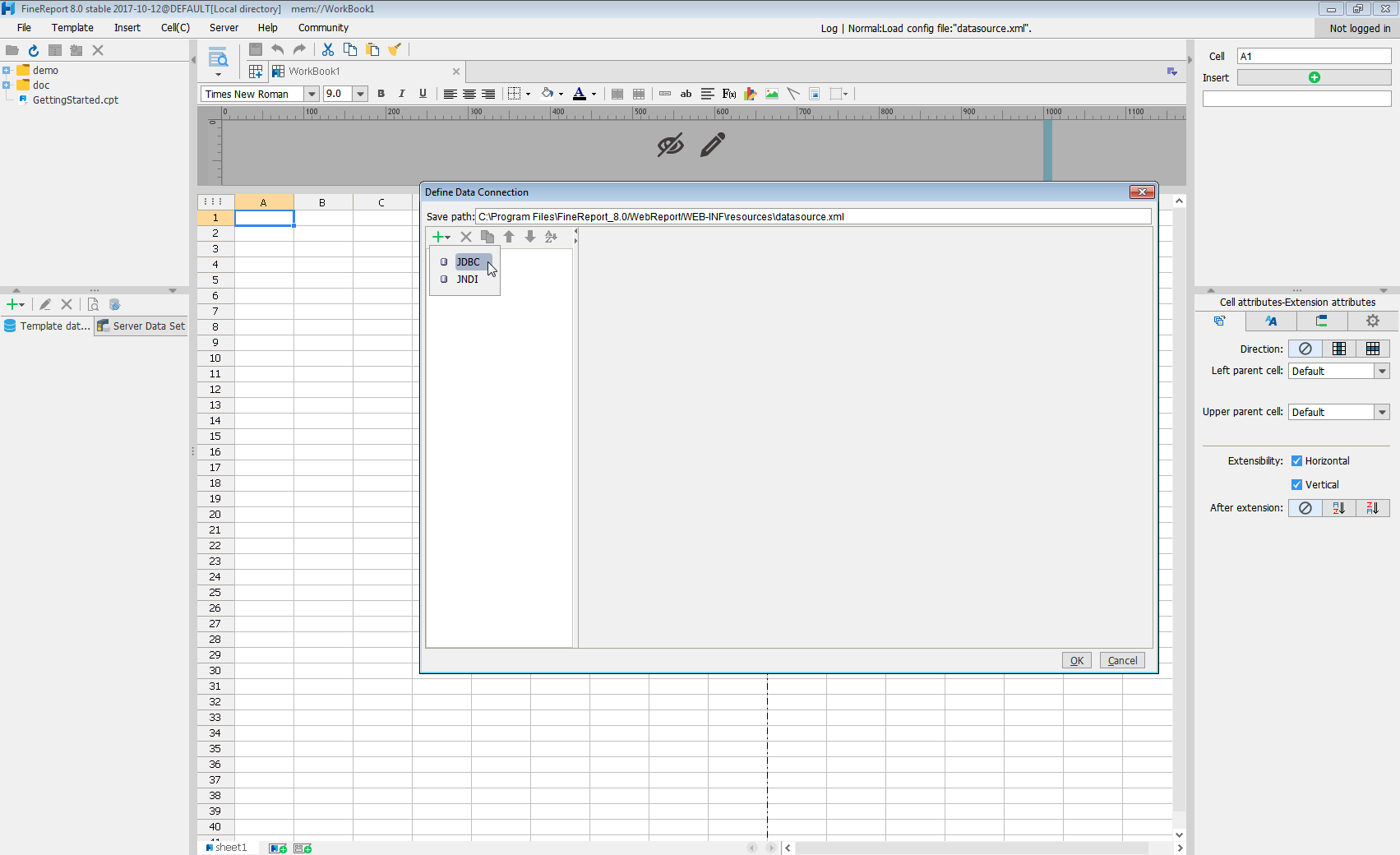
Next we will set up the data connection definition in the window.
- Database: Others
- JDBC Driver: cdata.jdbc.json.JSONDriver
-
URL: A standard JDBC connection string using semicolon-separated connection properties.
See the Getting Started chapter in the data provider documentation to authenticate to your data source: The data provider models JSON APIs as bidirectional database tables and JSON files as read-only views (local files, files stored on popular cloud services, and FTP servers). The major authentication schemes are supported, including HTTP Basic, Digest, NTLM, OAuth, and FTP. See the Getting Started chapter in the data provider documentation for authentication guides.
After setting the URI and providing any authentication values, set DataModel to more closely match the data representation to the structure of your data.
The DataModel property is the controlling property over how your data is represented into tables and toggles the following basic configurations.
- Document (default): Model a top-level, document view of your JSON data. The data provider returns nested elements as aggregates of data.
- FlattenedDocuments: Implicitly join nested documents and their parents into a single table.
- Relational: Return individual, related tables from hierarchical data. The tables contain a primary key and a foreign key that links to the parent document.
See the Modeling JSON Data chapter for more information on configuring the relational representation. You will also find the sample data used in the following examples. The data includes entries for people, the cars they own, and various maintenance services performed on those cars.
Built-in Connection String Designer
For assistance in constructing the JDBC URL, use the connection string designer built into the JSON JDBC Driver. Either double-click the JAR file or execute the jar file from the command-line.
java -jar cdata.jdbc.json.jarFill in the connection properties and copy the connection string to the clipboard.
![Using the built-in connection string designer to generate a JDBC URL (Salesforce is shown.)]()
When you configure the JDBC URL, you may also want to set the Max Rows connection property. This will limit the number of rows returned, which is especially helpful for improving performance when designing reports and visualizations.
A typical JDBC URL is below:
jdbc:json:URI=C:/people.json;DataModel=Relational; - Click Connection pool attributes and set Test before getting connections to No.
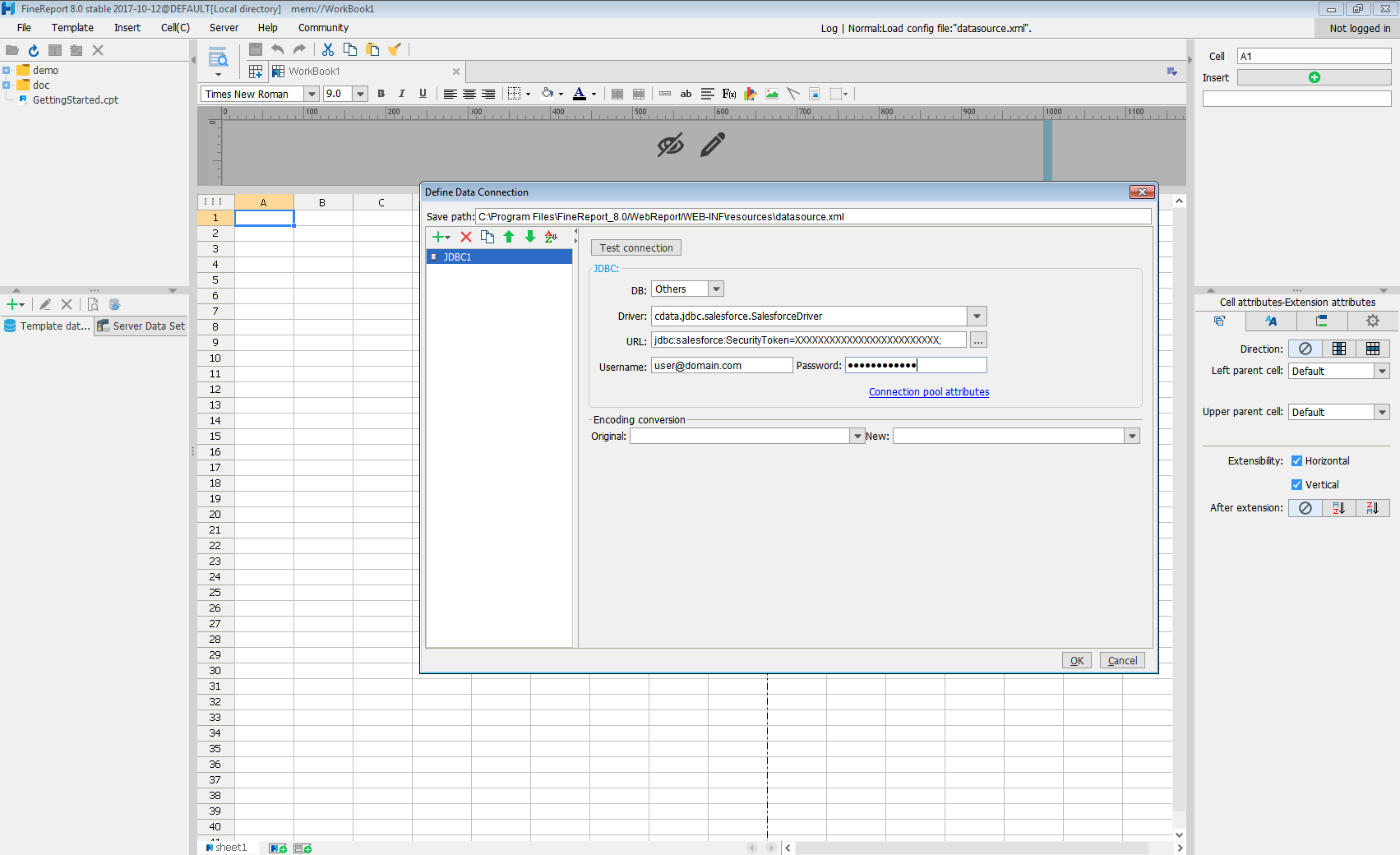
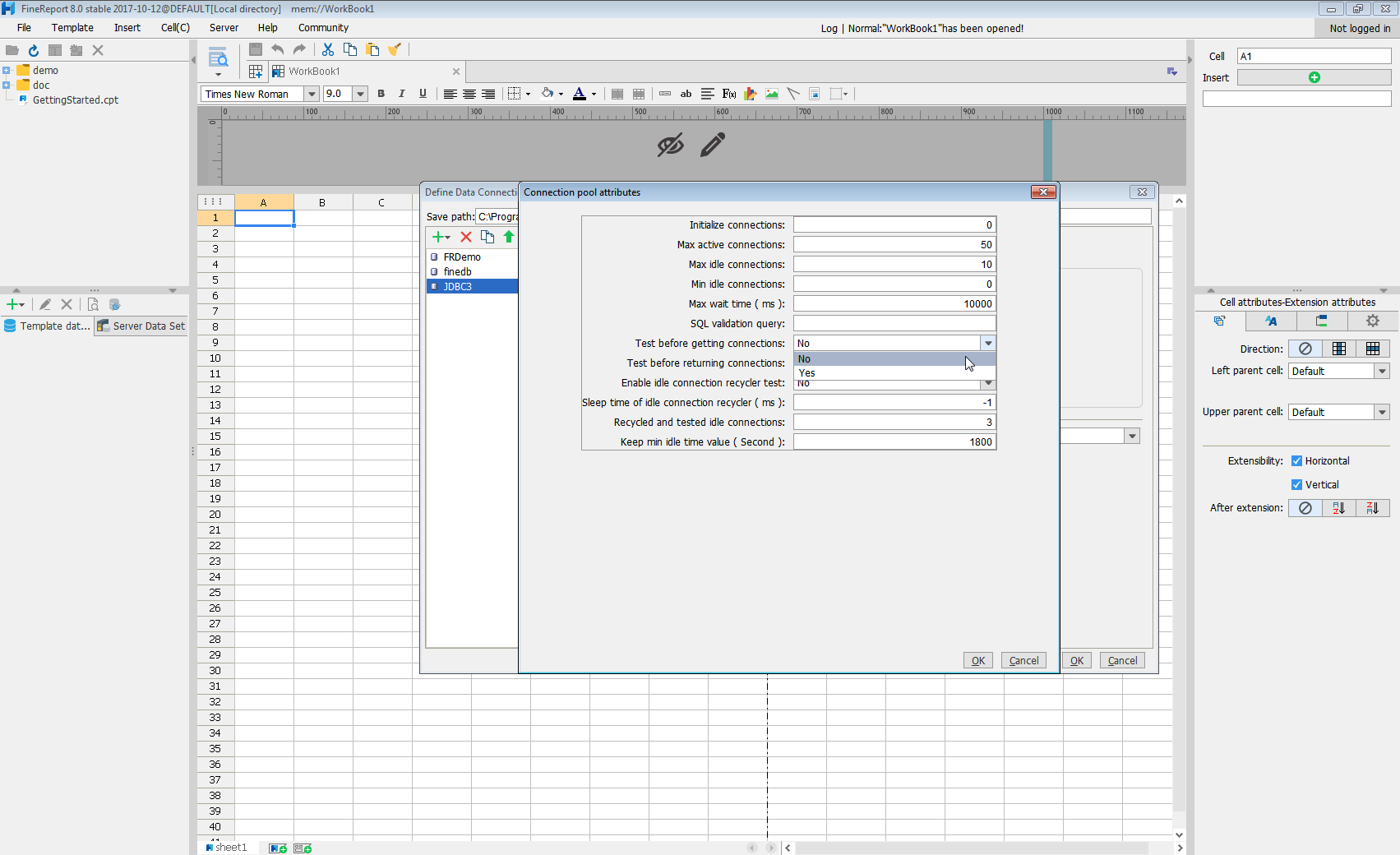
Click Test connection to ensure you have configured the connection properly. With the connection to JSON set up, you can use it as FineReport data source.
Select JSON Services in the Report Designer.
- Click to add a new template data set and select DB query to open the database query window.
- Choose the JDBC connection that you created from the dropdown list.
- The JSON entities will appear as tables on the left pane.
- Write a SELECT statement for the JSON services tables and columns that you want to load.
- Click preview and data is shown as table.
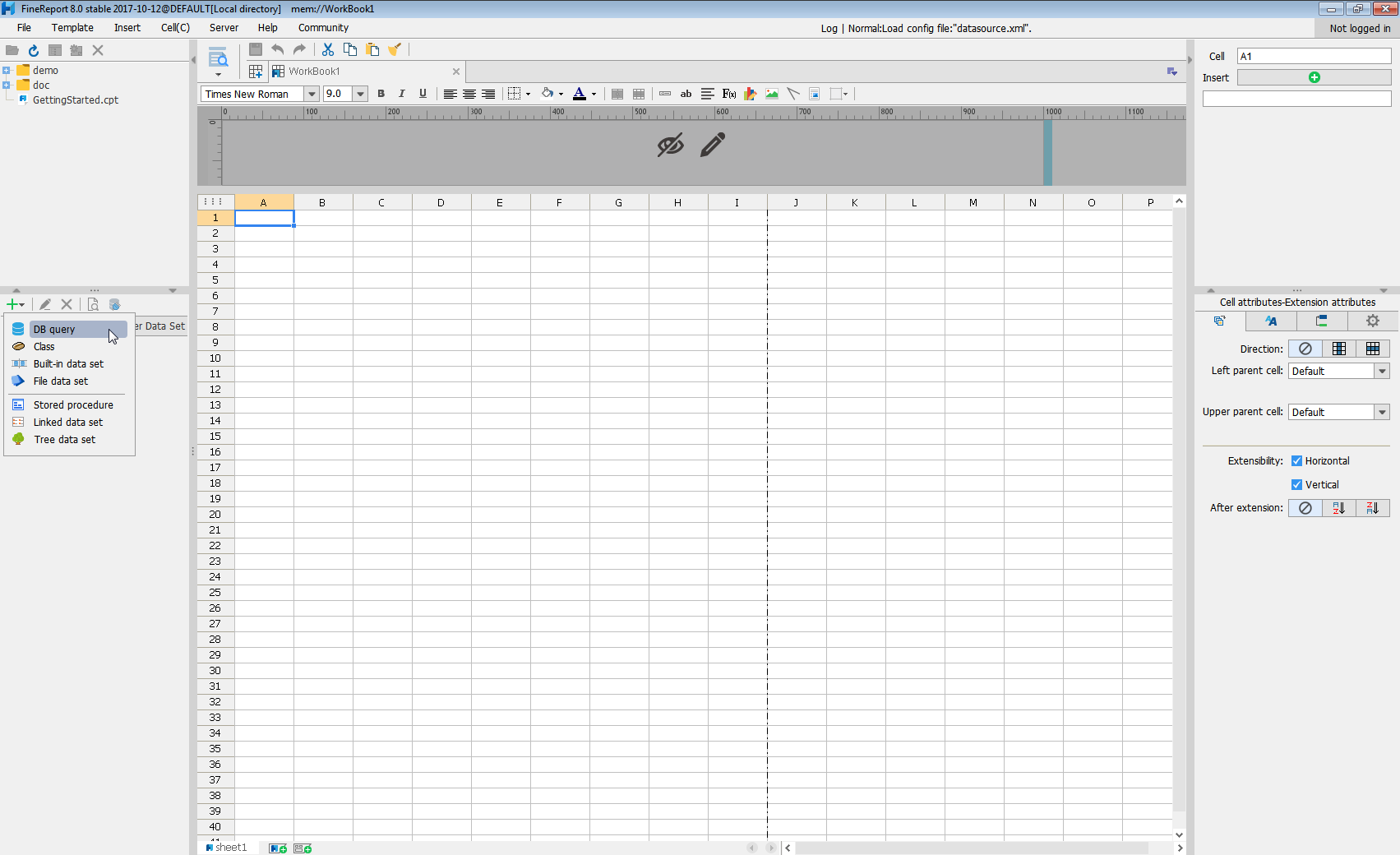
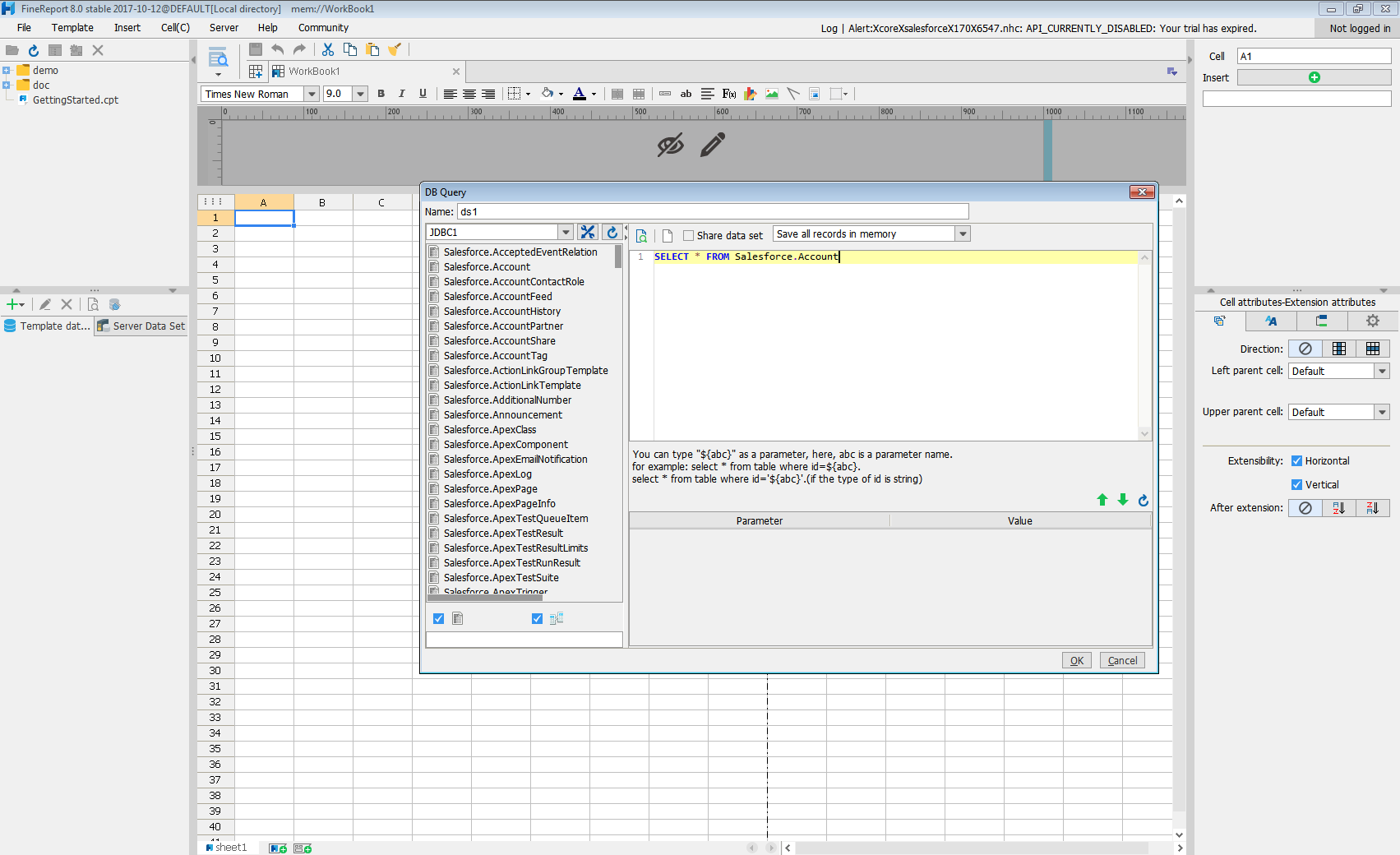
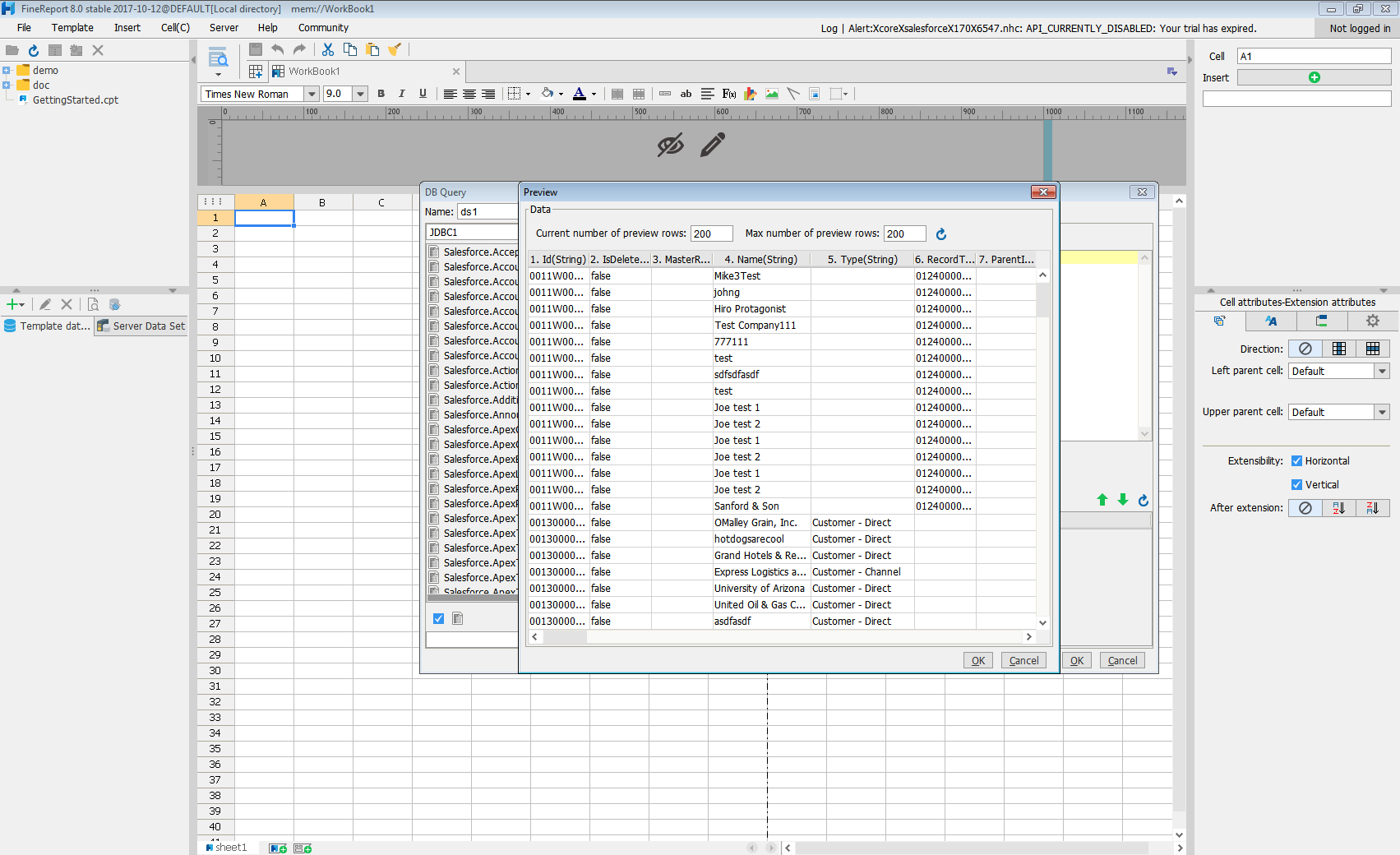
With these simple steps, JSON can be used as a JDBC data source in FineReport.







